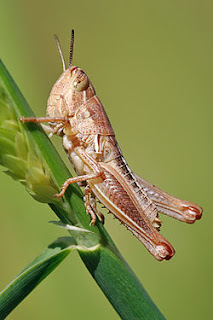Growing in-doors may seem like an easier task than growing out-doors but in my experience I found that growing in-doors can be a lot more of a challenge. Giving the plant the natural environment it needs to grow properly and healthily can be an obstacle when you don't have what is necessary, sometimes even creating that environment doesn't work out the way you want it to.
Proper air-circulation was the most vital factor that my plants lacked when growing in-doors, this caused quite a few bugs to arise from unhealthy plants as well as other infections. Air-circulation is just as important as the amount of water and sun the plant gets and is most definitely not to be overlooked when considering growing plants in-doors, this obviously can affect where you place your growing plants. In most cases the plant will be placed next to a sunny window but if that particular sunny window doesn't get enough air coming in then you may have a problem, as I had... with bugs in particular, and I think we can all agree that bugs is not something one wants a problem with in their home. If you have a sunny window with a good amount of air coming through always opt to place plants next to that particular window, whatever kind of vegetable plant you are growing doesn't matter when it comes to air-circulation, they all want it.
Whichever type of home you have, whether apartment or home, if you have a spot outside where you can place your growing plants, do so. The important thing to remember is that you don't need to have a yard to grow, a fire escape for potted plants or a window ledge for boxed planter beds also are good places, this way your plants can get proper air flow.
MY EXPERIENCE growing in-doors versus out-doors
When I first decided to grow vegetables I was living in a one-bedroom apartment with one sunny window that didn't get too much air flowing in and out. I lined quite a few plants on that one sunny window and made sure to keep the windows open during the day, I figured if my plants had any problems it was more likely due to lack of sun, as it happens it wasn't so much the lack of sun light rather than the lack of air-circulation. At some time little flying bugs became a problem, the problem had gotten bad enough for me to put out little dishes of vinegar to trap and drown them (I caught quite a few that way :) At the time I figured I just wasn't that good at growing and I still believe that somewhat but have slowly been gaining confidence since I've started my organic garden in my new yard, which I'm finding to be loads easier.
Today, as my plants begin to grow in my yard out-doors I'm beginning to realize that perhaps it wasn't really so much that I didn't know how to grow but that the external conditions simply wasn't good enough to grow healthy plants in my apartment. Plants need a certain amount of full-sun exposure, need certain amount of watering and proper air-circulation, all these things are naturally available outside and requires discipline, hard-work and diligence to create that natural environment in a setting where it is not available.
But don't be disheartened should you be an in-door grower, I have seen many apartment dwellers build perfectly beautiful small garden in-doors on their window sill, on the fire escape and even inside their apartments where they luckily had a sunny airy window.


















































